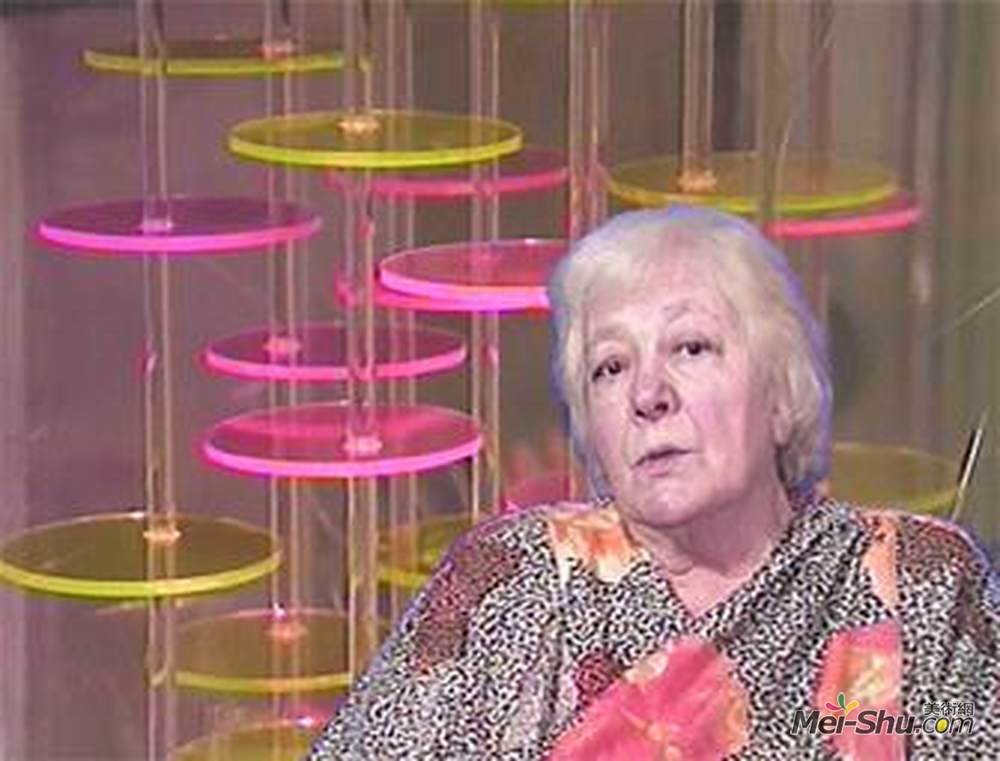
玛莎博托(Martha Boto)
艺术家: 玛莎博托
生于: 1925年12月27日;布宜诺斯艾利斯,阿根廷
卒于: 2004年10月13日;法国巴黎
国籍: 法国,阿根廷
流派: 机动艺术,欧普艺术
领域: 绘画,安装
Martha Boto于1925年12月27日出生于阿根廷布宜诺斯艾利斯。三十年代,她和她的合作伙伴格雷戈里奥·瓦达内加,一位意大利裔艺术家,积极参与了活跃在这个时代的艺术氛围。这一时期的典型特征是进入各种流派和风格,从印象派到表现主义绘画,超现实主义到抽象主义,所有这些最终导致光学和动力学艺术。瓦达内加和博托是阿根廷第一个创作出涉及运动的艺术品的人,1959年他们选择移居法国,以进一步发展他们的艺术追求。
在这段时间里,两位艺术家都在建造有机玻璃作品,大多数是悬挂在太空中的手机,而博托很快就会离开。在光学和动感艺术的发展中起着关键的作用。1961年,她在一个名为“国际抽象建筑艺术”的展览中向丹尼斯美术馆展出了她的作品。她的工作集中在运动、照明和颜色的概念上,博托探索了可以改变、吸收和反射光的材料的潜力,即有机玻璃、铝或不锈钢。1964年,她利用电机械,将光线投射到运动中的物体上,达到一种更加清晰的美学效果。这就是第一个动态光盒是如何诞生的。
镜子、多角度表面或反射金属在艺术家扭曲空间和改变每个正常物体的外观以创造不确定深度的能力中起着基础作用。同年,博托在巴黎的拉梅森·德·博克斯艺术展览馆展出了作品,1969年又在丹尼斯·伦内尔美术馆展出了作品。在整个九十年代期间,她的作品在法国拉瓦埃斯帕·巴托(1993)、阿根廷加莱利(1996)和圣兰伯特邮局(1997)展出。Martha Boto于2004年10月13日在巴黎逝世。2006,休斯敦的西卡迪画廊为Boto和Gregorio Vardanega举办了一个展览,题目是“联系人”。我的网络世界。
Artist :Martha Boto
Additional Name :Martha Boto
Born : Buenos Aires, Argentina
Died : Paris, France
Nationality :French,Argentinean
Art Movement :Kinetic art,Op Art
Field :painting,installation
Martha Boto was born December 27, 1925 in Buenos Aires, Argentina. In the Thirties, she and her partner Gregorio Vardanega, an artist of Italian origin, were active participants in the lively artistic atmosphere of the era. The period was typified by forays into various schools and styles, from impressionist to expressionist painting, surrealism to abstraction, all of which led eventually to optical and kinetic art. Having been the first in Argentina to create a work of art that involved movement, Vardanega and Boto chose to move to France in 1959 to further their artistic pursuits.
During this time both artists were constructing Plexiglas works, most often mobiles suspended in space, and Boto would soon play a key role in the evolution of optical and kinetic art. In 1961 she presented her works at the Galerie Denise René in an exhibit entitled Art Abstrait Constructif International. Focussing her work around the concepts of movement, illumination, and color, Boto explored the potential of materials that could modify, absorb, and reflect light, i.e. Plexiglas, aluminum, or stainless steel. In 1964 she approached upon an even more articulated aesthetic utilizing electric mechanisms and projected light on objects in movement. Such is how the first kinetic-light boxes were born.
Mirrors, multiangular surfaces, or reflective metal play a fundamental role in the ability of the artist to distort space and to transform the appearance of each normal object in order to create undefined depth. In the same year, Boto exhibited works at La Maison des Beaux-Arts in Paris and once more at the Galerie Denise René nel 1969. Throughout the course of the Nineties her works were exhibited in France at l’Espace Bateau Lavoir (1993), la Galerie Argentine (1996) and the Saint-Lambert Post Office (1997). Martha Boto died in Paris October 13, 2004. In 2006, the Sicardi Gallery of Houston dedicated an exhibit both to Boto and Gregorio Vardanega, entitled Contact. Le cyber Cosmos de Boto et Vardanega.